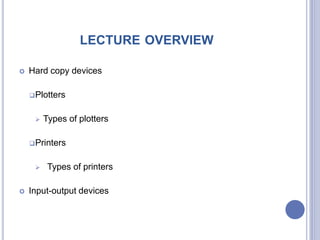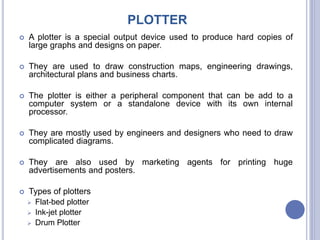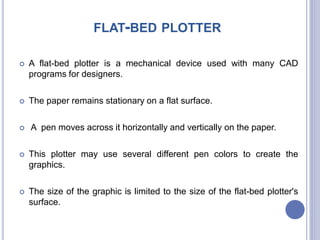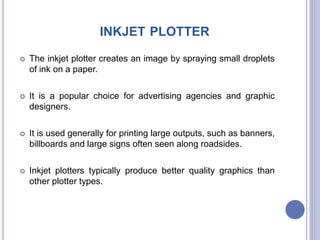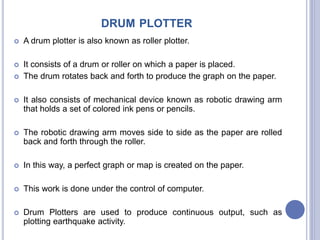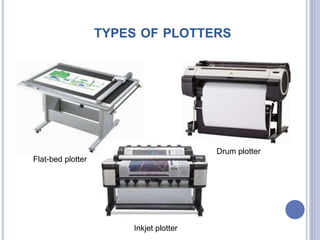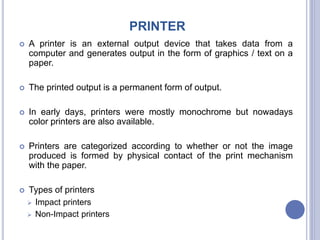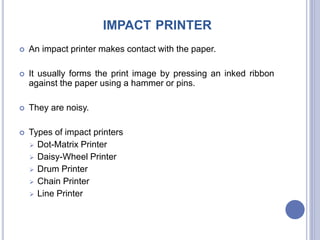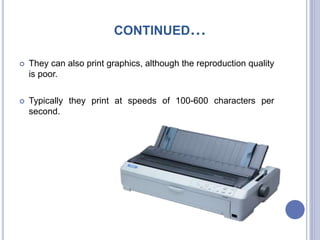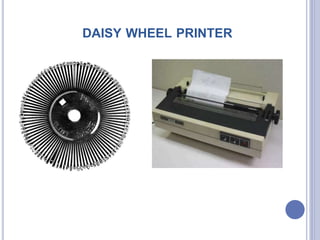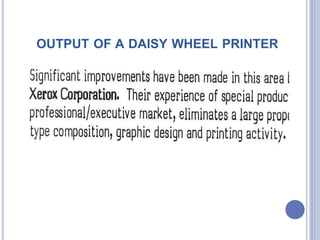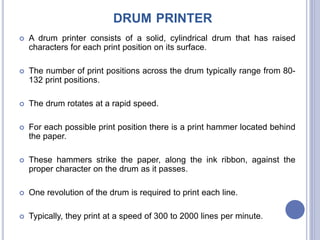The document provides a comprehensive overview of hard copy devices, specifically plotters and printers, detailing their types, functionalities, and applications. Different plotters such as flat-bed, inkjet, and drum plotters are discussed, along with various printer types including impact and non-impact printers, their mechanisms, and examples. Additionally, it covers input-output devices like headsets and touchscreens, emphasizing their dual functions in computer systems.

